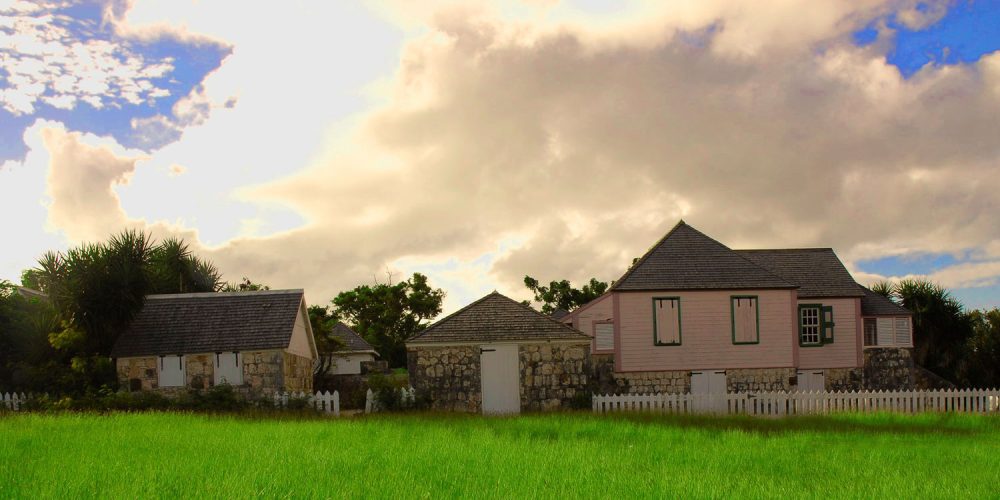
Josveek Huligar (permission given in e-mail), CC BY-SA 3.0, via Wikimedia Commons

Zemi Beach, CC BY-SA 4.0, via Wikimedia Commons
St. Gerard’s Catholic Church in The Valley, Anguilla, is a unique and historically significant building. The church, completed in 1966, was built after the original chapel was destroyed by a hurricane in 1961. Its construction was a community effort, reflecting the resilience and dedication of the local Catholic population.
One of the most striking features of St. Gerard’s is its façade, which is made from a mix of pebbles, stones, timber, and tiles. This eclectic combination gives the church a distinctive appearance that sets it apart from other buildings on the island. The open-air side walls and the ceiling, shaped like the hull of a ship, add to its unique architectural charm.
The church serves as an important center for the Catholic community in Anguilla, hosting regular masses and community events. Its history and architecture make it a notable landmark in The Valley, offering both spiritual and cultural value to residents and visitors alike.
Yes, St. Gerard’s Catholic Church in The Valley, Anguilla, is open to visitors. The church holds regular masses on Saturdays at 6:00 p.m. and Sundays at 9:00 a.m. Additionally, on the first Friday of each month, there is Adoration of the Blessed Sacrament and Benediction followed by Holy Mass at 5:00 p.m.
Visitors are welcome to attend these services and experience the unique architecture and community spirit of the church. If you plan to visit outside of these times, it might be a good idea to contact the church directly to confirm visiting hours.
<><>
The Valley is the charming capital of Anguilla, a British Overseas Territory in the Caribbean. Nestled in the center of the island, The Valley is known for its rich history, beautiful landscapes, and vibrant culture.
One of the notable historical landmarks in The Valley is Wallblake House, a plantation home built in 1787. It stands as a testament to the island’s colonial past and is now used as a rectory by the adjacent church. The town also features the ruins of the Old Court House on Crocus Hill, the highest point on the island, offering a glimpse into Anguilla’s judicial history.
The Valley’s climate is tropical, with a wet season that spans most of the year and a short dry season in February and March. Temperatures are consistently warm, ranging from 26 to 29 degrees Celsius. This makes it an ideal destination for those looking to enjoy sunny weather and outdoor activities year-round.
Despite its small size, The Valley is a hub of activity with new shops, restaurants, and cultural sites. The town’s European-style architecture with a Caribbean twist adds to its unique charm. Whether you’re exploring historical sites, enjoying the local cuisine, or simply soaking up the sun, The Valley offers a delightful experience for all visitors.
Wallblake House, built in 1787, is the oldest and only surviving plantation house on Anguilla. It was constructed by Will Blake, a sugar planter, and is named after him. The house is a significant historical landmark, showcasing colonial architecture and offering a glimpse into the island’s past.
One of the unique aspects of Wallblake House is that it has retained its entire complex of buildings, including the kitchen, stable, and workers’ quarters, virtually intact. This makes it one of the few plantation houses in the Caribbean with such a complete set of original structures.
The house has a rich history. It was gutted by the French in the late 1790s but was later rebuilt by the British. Over the years, it has seen various owners and uses, including serving as a rectory for the adjacent church. Today, Wallblake House is maintained by the Wallblake House Trust and serves as a center for cultural, social, and educational events for the island community.
Visitors to Wallblake House can explore its well-preserved rooms and learn about the history of Anguilla through exhibits and guided tours. The house is open to the public on specific days, offering a fascinating journey into the island’s colonial past.
<><>
The Valley, Anguilla, is rich with historical sites that offer a glimpse into the island’s past. Here are a few notable ones:
1. **Old Court House**: Located on Crocus Hill, the highest point on the island, the Old Court House ruins provide a fascinating look into Anguilla’s judicial history. The site offers stunning views of the surrounding area.
2. **Heritage Collection Museum**: This museum, curated by Colville Petty, is a treasure trove of Anguilla’s history. It covers everything from the island’s geology and the history of the Arawaks to the sugar industry and the Anguillian Revolution. The museum is a great starting point for anyone interested in the island’s heritage.
3. **Anguilla National Trust**: Located in The Valley, the Anguilla National Trust offers a variety of tours and activities that highlight the island’s natural and cultural heritage. It’s a great place to learn about Anguilla’s conservation efforts and explore its historical sites.
4. **St. Gerard’s Catholic Church**: Near Wallblake House, this church is known for its unique façade made of pebbles, stones, cement, wood, and tile. It’s a beautiful example of local craftsmanship and a significant part of the community.
These sites, along with Wallblake House, provide a comprehensive view of The Valley’s rich history and cultural heritage. Exploring them offers a deeper understanding of Anguilla’s past and its journey to the present.
Leave a Reply